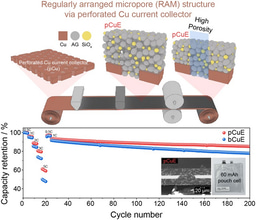Harnessing Fullerenes: Data-Driven Advances in Carbon Nanomaterials for Energy
Published in Research Data

Fullerenes are like the BFFs of chemists, and the most famous friend is Buckminsterfullerene (“buckyball”). These ball-like carbon cages formed by sp2 carbon come in all sorts of shapes, and sizes, and with that variety comes a treasure trove of cool properties. Naturally, chemists cannot help but obsess over finding the perfect cage for the perfect application. But here’s the catch: even though we can count the number of fullerene isomers, figuring out their individual properties — like stability, solubility, or electronic behavior — remains a tall order. Just for C20-C60 fullerenes, we’re talking about 5770 possible structures! Even with today’s computing power, like our school’s supercomputer (shout-out to HiPerGator), screening all these structures can take weeks. So, we took on the challenge. We gathered or generated all available fullerene structures to create the most comprehensive C20-C60 fullerene dataset. With some density functional theory (DFT) calculations, we crunched the numbers and created a one-stop shop for fullerene properties — 12 key metrics, including stability, solubility, and electronic characteristics. Now the fullerene universe is a little less mysterious!
But the story doesn’t end there. The number of possible fullerene isomers explodes as the number of carbon atoms (N=20+2n) increases at a rate of O(N9). So, once you get past C60, trying to compute each structure one by one becomes nearly impossible. Sure, we have some handy rules, like the Isolated Pentagon Rule (IPR), which says if two pentagons touch in a fullerene cage, it’s game over for stability. However, this rule is more of a rough estimate. It’s great for separating stable fullerenes (IPR-approved) from unstable ones (non-IPR), but it’s far from being able to predict stability in any real detail. We needed something better!
So, we asked ourselves, since we’ve got this awesome database for C20-C60 fullerenes, why not go beyond the old IPR and come up with some new, quantitative rules? After all, fullerenes are these polyhedral cages made entirely of carbon atoms, arranged in pentagons and hexagons. The way those rings are arranged creates different isomers and defines their properties. With that in mind, we got creative. We came up with a set of topological features based on the types of polygons surrounding atoms, bonds, pentagons, and hexagons, namely atom-, bond-, pentagon-, and hexagon-features. Then using good old linear regression, we explored how these features link up with important properties like stability (binding energy: Eb), solubility (ODCB-water partition coefficient: logP), and electronic property (HOMO-LUMO gap: Eg). We also measured geometric features like curvature, volume, surface area, etc. to see how they correlate with fundamental properties.
Key Findings
One of the most compelling discoveries is that the electronic properties, specifically the HOMO-LUMO gap, only show a weak correlation with both binding energy Eb and partition coefficient logP. This observation has significant implications. It means we can tweak the electronic characteristics of fullerenes for specific applications, like organic solar cells (OSCs), without worrying about sacrificing their stability or solubility. In other words, we’ve got a lot of flexibility to design fullerene-based materials that are optimized for electronics, while keeping all the other important properties in check.
When we introduced these new topological features, we found some pretty strong linear correlations with stability (Eb), but not so much with the electronic properties (Eg) — those didn’t show any clear relationship. As for solubility (logP), we saw a strong linear relationship with atom, bond, and hexagon features, but oddly enough, not pentagon features. However, this strong linear relationship holds across all fullerene sizes but doesn’t quite work for specific ones, like C60. This tells us that solubility is closely tied to size — the bigger the fullerene, the better it dissolves in solvents.
Topological indices
In designing our topological features, we were inspired by the topological indices introduced by Fowler and Manolopoulos, like the first-moment pentagon signature P1 and second-moment hexagon signature H2 [1]. These indices have been used to identify the most stable isomers from a set of IPR-compliant isomers for a given fullerene size. Their approach focuses on counting how many pentagons or hexagons are connected to other pentagons or hexagons. But our topological features not only count these connections but also take into account the specific arrangements of the rings, giving us a more detailed picture of how structure impacts properties.
Implications for Fullerene Applications
The database we built provides a comprehensive resource for fullerene research and applications. One key takeaway is that we can separate electronic properties from stability and solubility, which is a big win for using fullerenes as electron acceptors in organic photovoltaics, where fine-tuning electronic performance is crucial. Currently, fullerene like C60, C70, and C84 (and their derivatives) are already popular choices for pairing with conjugated polymer donors in OSCs. To help researchers working in OSCs, we applied Scharber’s model to estimate photovoltaic performance, like power conversion efficiency (PCE), using the well-known polymer P3HT as donor material. After screening fullerenes from C20 to C60, we found the highest PCE at 9.6%, achieved by C20-#1. But when factoring in solubility, the top candidates shift to C52-#333 and C60-#60, since C20-#1 struggles with low solubility. We hope this work provides a solid foundation for future fullerene functionalization and its applications in energy and nanotechnology.
[1] Fowler, Patrick W., and David E. Manolopoulos. An atlas of fullerenes. Courier Corporation, 2007.
Follow the Topic
-
npj Computational Materials

This journal publishes high-quality research papers that apply computational approaches for the design of new materials, and for enhancing our understanding of existing ones.
Related Collections
With Collections, you can get published faster and increase your visibility.
Recent Advances in Active Matter
Publishing Model: Open Access
Deadline: Sep 01, 2026
Computational Catalysis
Publishing Model: Open Access
Deadline: Dec 31, 2025




Please sign in or register for FREE
If you are a registered user on Research Communities by Springer Nature, please sign in